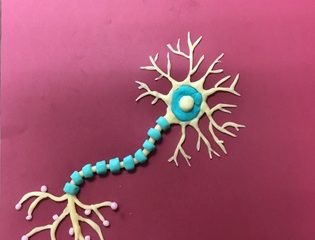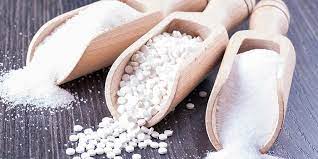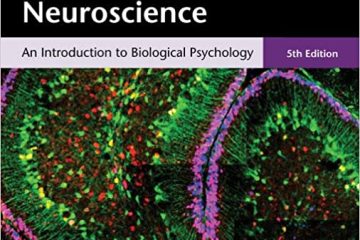This week, our Biopsych class covered sensation and perception. On Tuesday, the students worked overtime to wrestle with the ever-popular topic of visual receptive fields. Receptive fields are one of the more difficult things to cover in S&P, and I’m still working out how to do this most effectively.
With great relief, then, we moved today to the “non-visual” senses, including the chemical senses. I’m still disappointed to learn that supertasters are no longer believed to have extra papillae. Painting our tongues blue with food coloring and counting our papillae was always one of my favorite things to do.
But this is no time to despair, especially when we can still do our miracle berry activity. Miracle berries, or more formally Synsepalum dulcificum, grow on shrubs native to West Africa. The berries contain a substance called miraculin. When the pH in the mouth becomes low, as when you eat a sour food, the miraculin activates sweet receptors. The end result is that sweet-tasting foods, like strawberries, become much sweeter, and sour foods, like lemons, become sweet.
To run the demonstration, I purchased a packet of miracle berries on Amazon along with a hefty bag of fresh lemons from Costco. I selected this brand of miracle berries, which I had not used previously, because it was relatively affordable for my class of 35 students ($24.99).

The package literally contained dried berries cut in half. The instructions were to munch them for 30 seconds, moving them around the tongue and mouth, and then swallow. They’re not unpleasant in their own right. Then the students would eat a slice of lemon (I sliced a bunch at home and brought to school in airtight containers, along with some paper towels).
All of the students experienced a strong sensation of sweetness while sucking on lemons, and many asked for a second piece! Then the party became even more interesting when a couple of students decided to see how their Oreos would taste. I predicted that they would taste sweeter, but we hadn’t had an opportunity to do a before and after comparison. They didn’t seem to think the taste of the Oreos changed much, but they took some extra miracle berries home to try again.
We also watched a YouTube from the 2010 APS Conference featuring Linda Bartoshuk’s poster, based on a miracle berry experiment she did during her presidential talk the year before. Daughter Karen and I were 2 of the N=538 participants Linda mentions in her poster. When we arrived at her talk, we found a miracle berry, a strawberry, a lemon slice, and a survey on our chairs. Linda’s conclusions suggest that our response to miracle berries is affected by learning. We associate strawberries with sweetness (especially when you live in California), but lemons are associated with both sourness and sweetness, because we usually sweeten things like lemonade. We didn’t try the strawberries in class this time, but I might try to duplicate Linda’s results next quarter.
The students were very excited about this demonstration, and most left the class determined to try things out on their unsuspecting roommates and friends. It was much more fun than receptive fields!



0 Comments